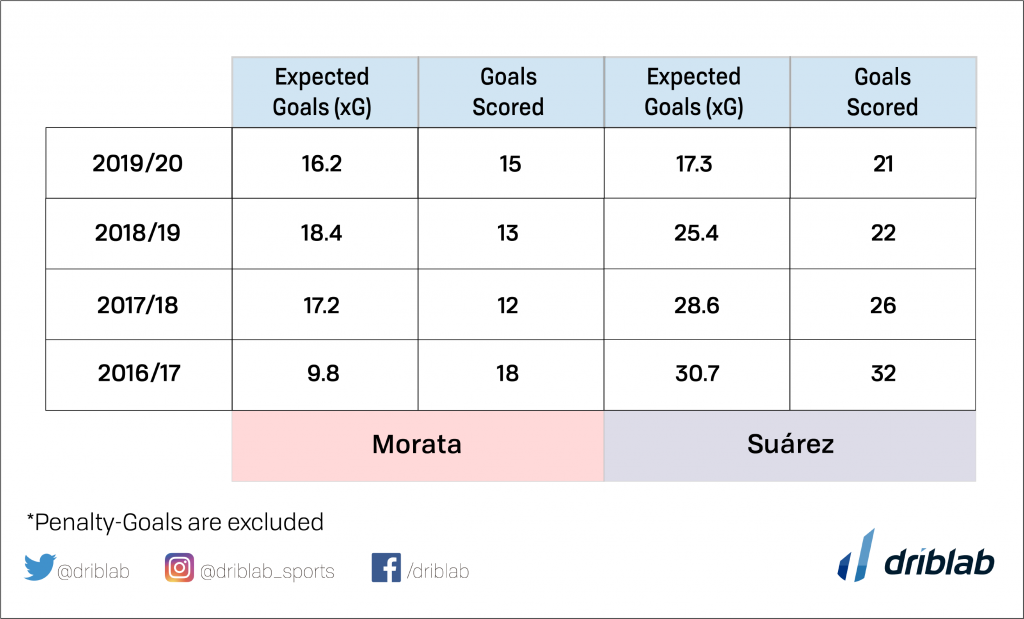Until a few days ago, Atlético de Madrid was one of the LaLiga teams that was passing this market window with more discretion. Except for the return of Yannick Carrasco and the incorporation of the young Croatian goalkeeper Ivo Grbić, the club had almost made no moves. But the calm has ended up breaking with the departure of Morata and the arrival of Luis Suárez, an operation that has generated a lot of noise within Spanish football. Using the data from Driblab, a consultant specialising in sports analysis based on the use of data, we have analysed the performance of these two strikers. And the truth is that offensive terms, Atlético seems to win with the exchange.
On the radar below we compare some of the metrics of both in 2019/20. There is no doubt that Suárez had a much greater offensive impact than Morata, with more shots, more chances created per 90 minutes and a higher percentage of retained balls. In fact, one would have to go to the 2017/18 campaign to find a similar volume of shots in Morata: 3.49. That year Suárez matched that figure, but it was much more effective in finishing, as we shall see later.

In favour of the Spanish striker it must be said that his defensive involvement is greater, with an average of recoveries usually higher and also figures more in the individual pressure index. Moreover, in Morata we find much more aerial productivity, with 3.17 duels won by the top in the last seasons. Although is true that Barcelona’s style has a significant impact in Suárez figures in this aspect. The South American’s greatest success in passing (close to 75%) may derive from this too.
Entering into a more in-depth analysis, we will talk about the finishing metrics. It is necessary to emphasize that both are players of a great instinct in the final meters. They both shoot in very clear situations, although it is Morata who has stood out the most in this aspect, with an average of 0.20 xG per attempt in the last two campaigns. The expected goals ratio (xG) is an advanced metric that measures the probability of a goal being scored from each shot based on factors such as distance to goal, angle or the part of the body the striker contacts the ball with. In this table we check if Morata and Suárez have been accurate in finishing in recent seasons, taking into account the quality of their shooting opportunities.

Although Suárez has shown some ups and downs over the years, this model proves that he has been much more efficient than Morata in front of the goalkeeper. This season, in fact, he scored 21 goals in shooting situations of which 17.3 xG were estimated. If we go to the part of the table that corresponds to the Juventus striker, we will see that he has been more inaccurate than Suárez. Except in the 2016/17 season, when he solved with much success playing for Real Madrid, Morata has always scored fewer goals than expected in recent years.
We are Driblab, a consultancy specialized in the statistical analysis of players and teams; our work is focused on advising and minimizing risk in professional football decision-making in areas related to talent detection and footballer evaluations. Our database has more than 130,000 players from more than 180 competitions, covering information from all over the world. Here you can learn more about how we work and what we offer.














